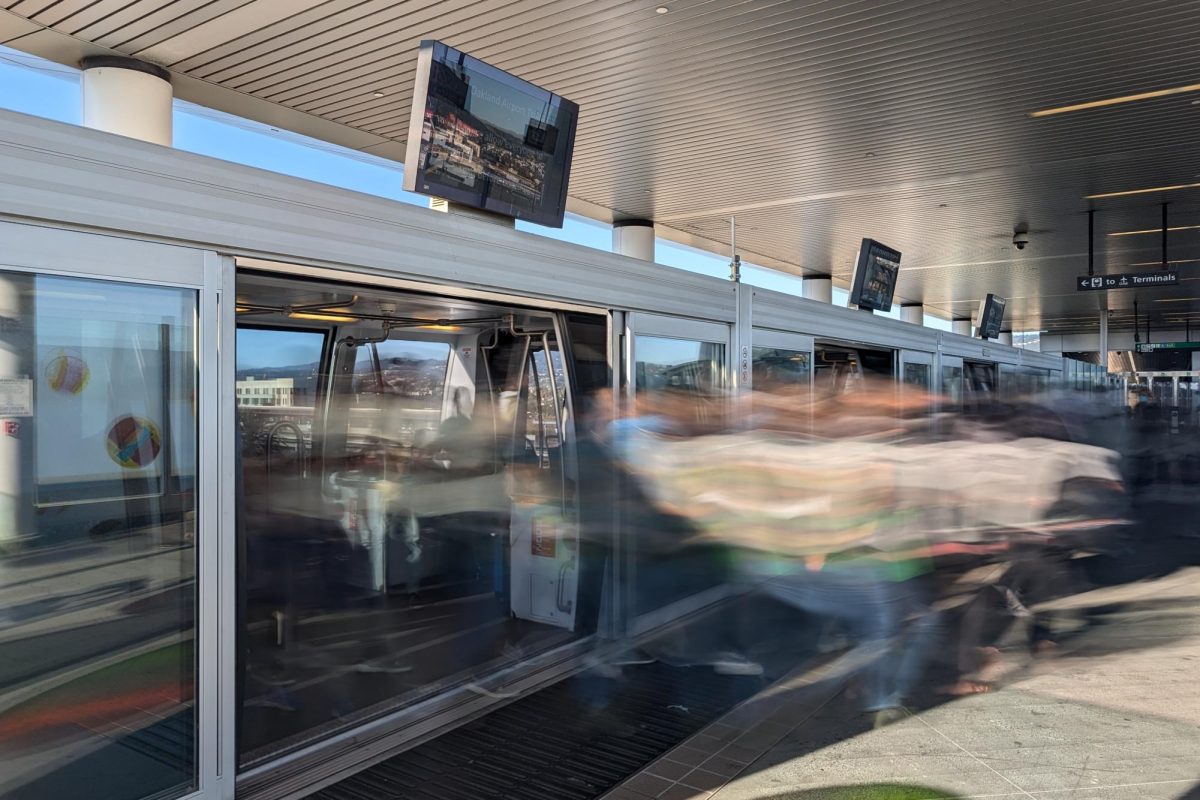Three weeks ago, Bay Area Rapid Transit (BART) issued three “major medical emergency” alerts — these are incidents when people have been hit by trains, according to BART’s website. These three were out of nine since the beginning of this year, including one in July, in which foul play was suspected, according to James Allison, a BART spokesperson.
Major medical emergencies cause delays, service suspensions and station closures, resulting in people having to take bus services.
Platform screen doors are physical barriers preventing people and things from making it onto the tracks and are common across Europe and Asia. A study published by Chinese researchers in 2019 showed that the number of suicides on metro systems fell by over 90% after platform barriers, including platform screen doors, were installed.
There are 50 stations in total across the BART system — two of which already have platform barriers.
They are Coliseum Station, at the Oakland Airport Connector platform, and Oakland International Airport Station, which is the other terminus for the connector.
“It was brand new construction and the service doesn’t use our train control system. It is a cable-propelled system,” said Alicia Trost, BART chief communications officer. “Building platform screen doors into an existing system is very complex. It is much easier if they are installed during the original construction. In North America, no major public transit rail systems have installed PSDs onto existing stations.”
In a BART board meeting on July 11, Sylvia Lamb, assistant general manager for infrastructure delivery, presented the benefits of installing platform screen doors.
“BART has been looking at platform screen doors for many years,” Lamb said. “We continue to look at it. We did a feasibility study in 2017.”
The U.S. Department of Transportation lists three kinds of platform barriers: gates (which are half as tall as trains), edge doors (which are as high as trains), and screen doors (which go all the way to the ceiling). Vertically-opening rope, glass, and polycarbonate platform barriers also exist.
The BART system, being older than many systems that have installed platform screen doors, poses retrofitting challenges. Also, the technology for platform screen doors is changing, and BART officials are hesitant to commit to a specific design until a more mature and adaptable solution emerges, according to Lamb.
Funding is another major hurdle.
“We do not have funding right now for platform screen doors,” Lamb said.
In 2018, a proof-of-concept was planned to be installed in 12th St. Oakland City Center Station, but the plans were put on hold.

According to Trost, the station was identified as a potential station to test platform screen doors into an existing system but BART chose not to continue with it due to the costs, risks, and timing of the new Communications Based Train Control (CBTC) system.
“The design would be unique to BART’s existing block system wayside train control and become obsolete when BART brings on CBTC,” Trost said. “At the time of the feasibility study, the cost estimate to build platform doors into an existing station with the existing train control system was $20-25 million.”
Krisann Neubauer, a BART rider, would like to see platform barriers at all BART stations.
“I feel a level of comfort that you can’t just fall onto the tracks,” Neubauer said. “It would provide a better level of comfort for safety.”
Bevan Dufty, one of BART’s directors, acknowledged the need for platform barriers across the system but emphasized that the installation of the new train control system needs to happen first.
“I have been persistent and passionate advocates that we should begin the progress to determine the path to have screen doors that will prevent injuries or suicides within our system,” Dufty said. “We are in a massive undertaking to implement our CBTC — upgrading the brains of our system and allowing us to increase the number of trains passing through the Transbay Tube from 24 to 30 per hour. We cannot move into a planning phase for screen doors until we are closer to finishing CBTC.”
Lamb talked about why CBTC is important for installing those doors.
“Most platform screen doors up until a few years ago, were longitudinal, meaning that they opened horizontally,” Lamb said. “Now, the important part of that is that in order for those to work, you got to make sure that the train doors line up exactly where those platform doors are. So in most cases, the best way to do that is CBTC on the cars to make sure they know where they start and stop, and there’s no real leeway that if those doors don’t line up — they have to line up perfectly.”
According to BART’s website, CBTC won’t be fully installed until 2032.
In the meantime, BART has implemented other safety measures to prevent major medical emergencies, including suicide prevention posters, crisis intervention training for staff and the deployment of Crisis Intervention Specialists, according to Trost.









